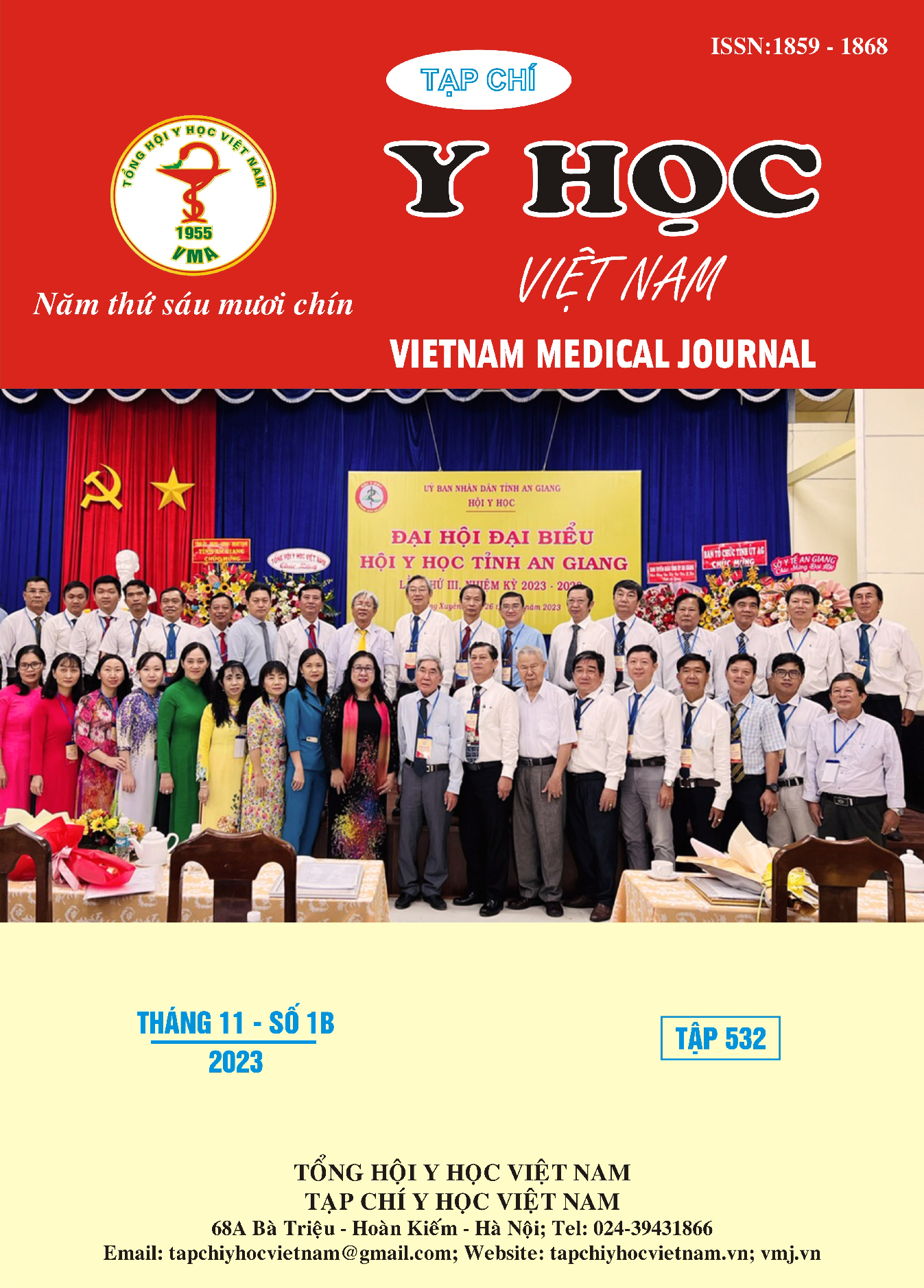ASSESSING THE IMPACT OF NORADRENALINE COMBINED WITH VASOPRESSIN IN SEPTIC SHOCK PATIENTS ON HEMODYNAMICS
Main Article Content
Abstract
Objective: This study aimed to evaluate the hemodynamic effectiveness of combining Noradrenaline (NE) with Vasopressin (AVP) or Terlipressin (TP) in septic shock patients. Methods: A single-center, randomized intervention study was conducted on 29 septic shock patients. Patients receiving NE at a dose of ≥0.1 mcg/kg/minute for one continuous hour were either administered AVP (0.03 U/minute) or TP (40 mcg/hour) continuously. NE dosage was titrated to achieve the target blood pressure. Hemodynamic parameters were compared before and after the administration of the combination therapy (AVP/TP), and adverse effects were recorded. Results: After combining NE with AVP/TP, there was an improvement in hemodynamic parameters, including an increase in mean blood pressure, a decrease in heart rate, an increase in systemic vascular resistance index (SVRI), and a reduced NE dose required. The rate of serious adverse effects after combining AVP/TP was 6.8%, which was not significantly different from the rate of adverse effects observed in previous studies using NE alone (p=0.79). Conclusion: Early combination therapy of NE with AVP/TP improves hemodynamics by increasing SVRI, elevating mean arterial pressure, and reducing heart rate, with no significant difference in the rate of adverse events compared to NE monotherapy as observed in previous studies.
Article Details
Keywords
septic shock, vasoactive, Terlipressin, Vasopressin, Noradrenaline, hemodynamics.
References
2. Evans L, Rhodes A, Alhazzani W, et al. Surviving Sepsis Campaign: International Guidelines for Management of Sepsis and Septic Shock 2021. Critical Care Medicine. 2021;49(11) :e1063. doi:10.1097/ CCM.0000000000005337
3. Leone M, Albanèse J, Delmas A, Chaabane W, Garnier F, Martin C. Terlipressin in catecholamine-resistant septic shock patients. Shock. 2004; 22(4): 314-319. doi:10.1097/ 01.shk.0000136097.42048.bd
4. Serpa Neto A, Nassar AP, Cardoso SO, et al. Vasopressin and terlipressin in adult vasodilatory shock: a systematic review and meta-analysis of nine randomized controlled trials. Critical Care. 2012;16(4):R154. doi:10.1186/cc11469
5. Liu ZM, Chen J, Kou Q, et al. Terlipressin versus norepinephrine as infusion in patients with septic shock: a multicentre, randomised, double-blinded trial. Intensive Care Med. 2018;44(11): 1816-1825. doi:10.1007/s00134-018-5267-9
6. O’Brien A, Clapp L, Singer M. Terlipressin for norepinephrine-resistant septic shock. The Lancet. 2002;359(9313):1210-1212. doi:10.1016/S0140-6736(02)08225-9
7. Morelli A, Ertmer C, Rehberg S, et al. Continuous terlipressin versus vasopressin infusion in septic shock (TERLIVAP): a randomized, controlled pilot study. Crit Care. 2009;13(4):R130. doi:10.1186/cc7990
8. Morelli A, Donati A, Ertmer C, et al. Effects of vasopressinergic receptor agonists on sublingual microcirculation in norepinephrine-dependent septic shock. Crit Care. 2011;15(5):R217. doi:10.1186/cc10453


